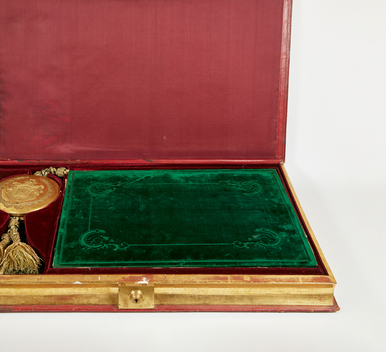The permanent exhibition of the Museum of Moscow includes the foundation plaque of the obelisk in Alexander Gardens, a metal plate traditionally placed at the base of a building, monument, bridge, etc. at the beginning of construction.
The obelisk in Alexander Gardens was erected in 1914 to commemorate the 300th anniversary of the accession of the Romanov dynasty. The decision to build it was adopted on December 24, 1913 by the Moscow Duma. The inscription on the plaque contains full details of its name, the commissioner, the date the construction began, the architect, the engineer, the important people who initiated or financed the construction, and other essential information. The obelisk is located next to the Italian Grotto and the Middle Arsenal Tower.
Alexander Gardens were built in 1812. Until the late 18th century, the Neglinnaya River flowed in this area. The river was a vital part of the city: on its banks folk festivals were traditionally organized, and its water was so clean that fishermen gathered everyday on its shores. Over time, the river began to get polluted, and the shores began collapsing. Emperor Alexander I decided to transform this area and the Neglinnaya was canalized: it was enclosed in a three-kilometer-long pipe; the builder Yegor Cheliyev supervised the work. The gardens were laid out in the vacated place, as designed by the architect Joseph Bové as part of the plan to rebuild Moscow after the fire of 1812. Alexander gardens had a memorial significance: they were created to commemorate the victory in the Patriotic War. However, they also had a recreational function for the citizens.
The gardens were built from 1819 to 1823 and were originally called Kremlin gardens. After the coronation of Alexander II in 1856, they were renamed Alexander Gardens. To arrange the garden the area was leveled and turfed; lime trees, birches, rowan trees and other trees and shrubs were planted. The main entrance was equipped with a cast-iron gate depicting the symbols of victory in the Patriotic War. It was designed by the architect Evgeny Pascal.


